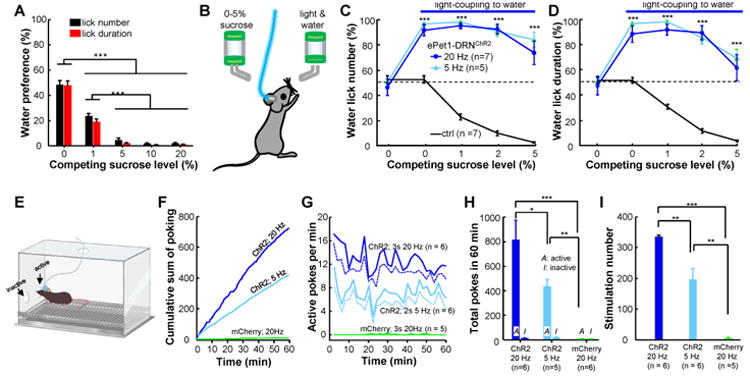Figure 2. Stimulation of DRN Pet-1 neurons shifts sucrose preference and causes operant reinforcement for self-administration.

(A) In two-bottle preference tests, wild-type mice exhibited a reduced preference for water when the sucrose concentration was increased in the competing bottle. The preference scores were quantified using either lick numbers (black) or lick duration (red). ***, p < 0.01; One-way ANOVA followed by Tukey's multiple comparisons test; n = 8 mice. (B) The method of testing the effect of DRN neuron activation on shifting sucrose preference. (C and D) Coupling light stimulation to licking for water increased lick numbers (C) and lick duration (D) for water and shifted animal preference away from sucrose. ***, p < 0.001; Two-way ANOVA with Sidak's multiple comparisons between tests with or without light coupling. (E-I) DRN stimulation reinforces operant learning. (E) The method of optical self-stimulation. Mice received DRN light stimulation after nose poking through the ‘active’, but not the ‘inactive’, hole of an operant chamber. (F) Plots of cumulative nose-pokes of individual mice. ChR2-expressing mice, but not the mCherry control animals, vigorously poked the ‘active’ hole for self-stimulation. (G) The rate of active nose pokes across the test sessions of 60 min. ePet1-DRNChR2 mice stably completed ∼12 active pokes/min throughout the test sessions with strong light stimulation (3 s, 20 Hz) and ∼7 pokes/min with weaker stimulation (2 s, 5 Hz), whereas the number of active nose pokes was close to zero for the ePet1-DRNmCherry control mice. (H) Group data showing the total number of active and inactive pokes within a 60-min session. (I) ePet1-DRNChR2 mice earned more than 300 trains of light stimulation with strong stimulation and ∼200 stimulations with weak stimulation, whereas ePet1-DRNmCherry control mice collected only ∼3 stimulations. Due to the 5-s timeout for stimulation delivery, the number of earned stimulations was fewer than that of nose pokes. **, p < 0.01; ***, p < 0.0001; between-group t-tests. See also Movie S3.
